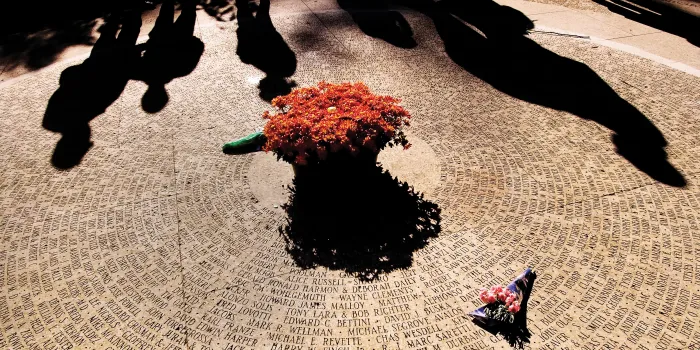In 1990, Ryan White, an 18-year-old with hemophilia, passed away from AIDS. His mother, Jeanne White-Ginder, felt alone in her grief. “At the time, the hemophilia community didn’t want to talk about it. And so I was alone,” she says.
Like so many of the families of those who died as a result of HIV-contaminated blood products, White-Ginder felt that a community she’d relied on for so long had disappeared. “If you have a son with hemophilia who died of HIV, you no longer had your support network because you didn’t have a son with hemophilia anymore,” says Val D. Bias, CEO of the National Hemophilia Foundation (NHF). “So where do you go to address that grief? Where’s your place to revisit that time in your life or that love you had for that child?”
Nearly 30 years after her son’s death, White-Ginder and thousands of other families in the hemophilia community who were affected by HIV and AIDS now have that place—a permanent memorial in San Francisco’s Golden Gate Park.
The Hemophilia Memorial at the National AIDS Memorial Grove opened in September. The crescent-shaped granite bench overlooking the Grove where families can gather to honor their lost loved ones and tell their stories was created through a collaboration of NHF, the Hemophilia Federation of America (HFA) and the Grove.
“We hope all families in the bleeding disorders community, regardless of how they were affected by the HIV and AIDS tragedy, will be inspired by the power of love, collaboration and strength in our community,” says Bias.
“The AIDS Grove setting is a beautiful one that will be very meaningful to many, and I hope those who visit will find some sense of peace and healing,” adds Kimberly Haugstad, president and CEO of HFA. NHF and HFA committed $125,000 and $40,000, respectively, to support the memorial’s construction.
White-Ginder, a great fan of the Grove, first suggested the idea to John Cunningham, executive director of the National AIDS Memorial Grove: What if the hemophilia community’s loss could be a part of the Grove? “There was a lot of blame and resentment back then,” says White-Ginder. “I felt that our community could come together.”
And come together they did. “We all agreed to move forward on this memorial, to support it financially and to appear as a united front at its dedication. This is a significant step, and I hope that that collaboration continues,” says Bias.
“Like any memorial, it’s about so much more than the individual names that may be engraved or inscribed in stone,” says Cunningham. “It’s truly about the stories of those lives and of those individuals that are being memorialized within the space.”
Learn More

